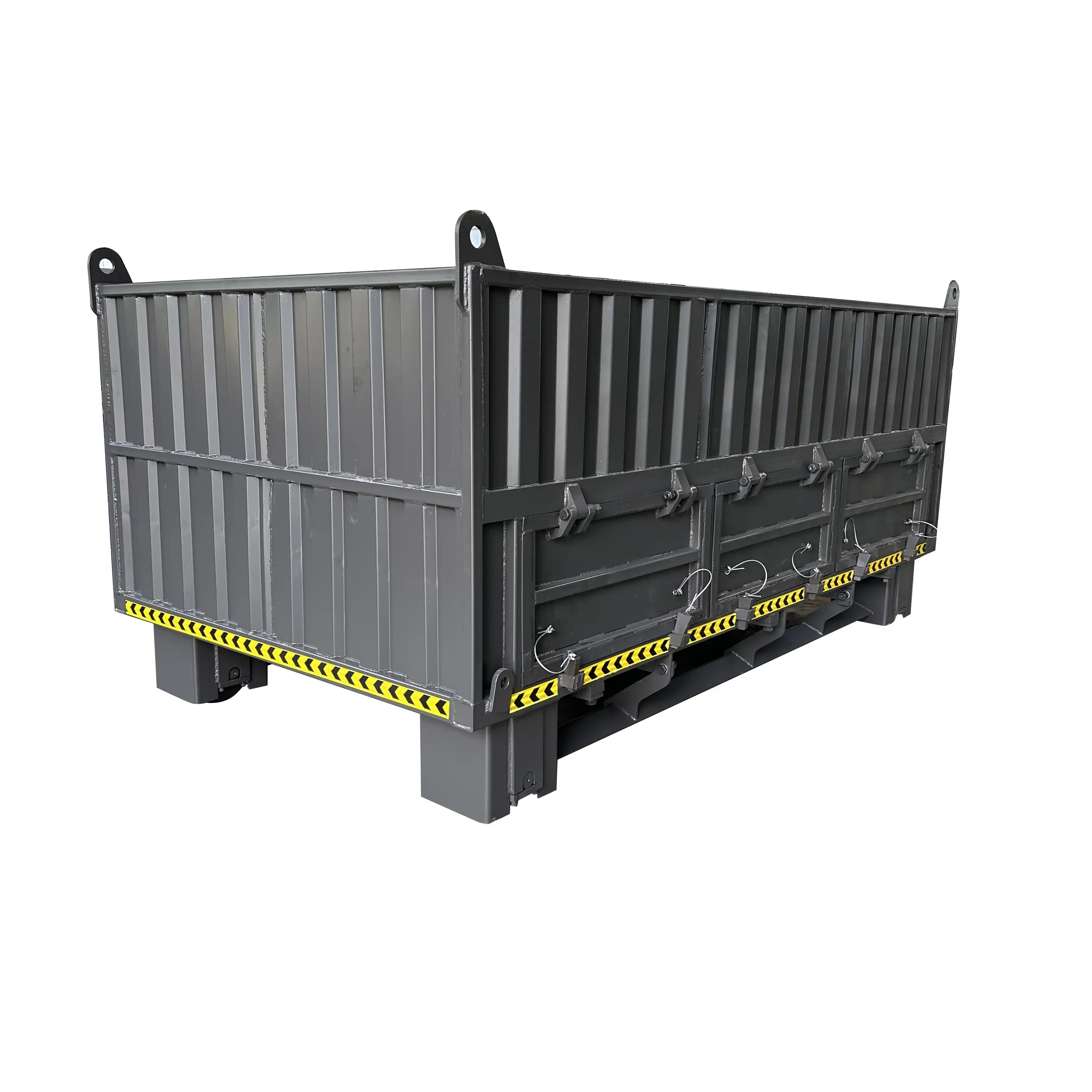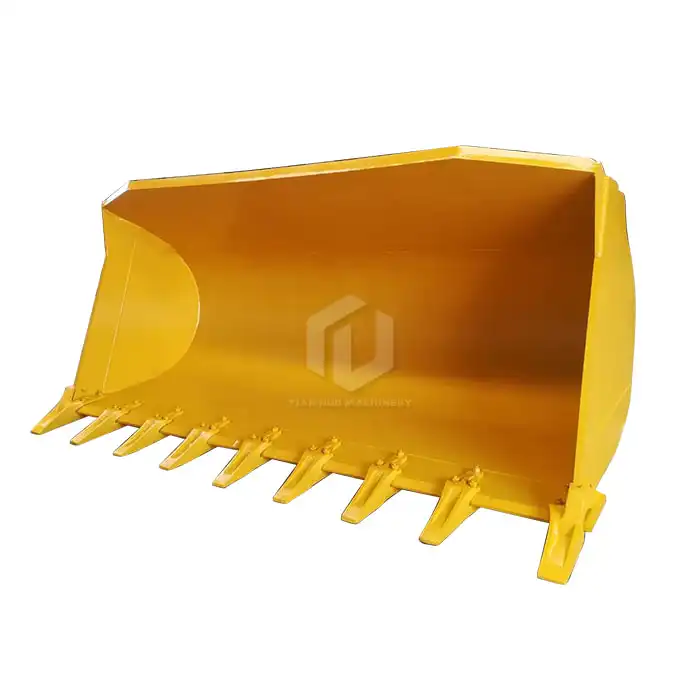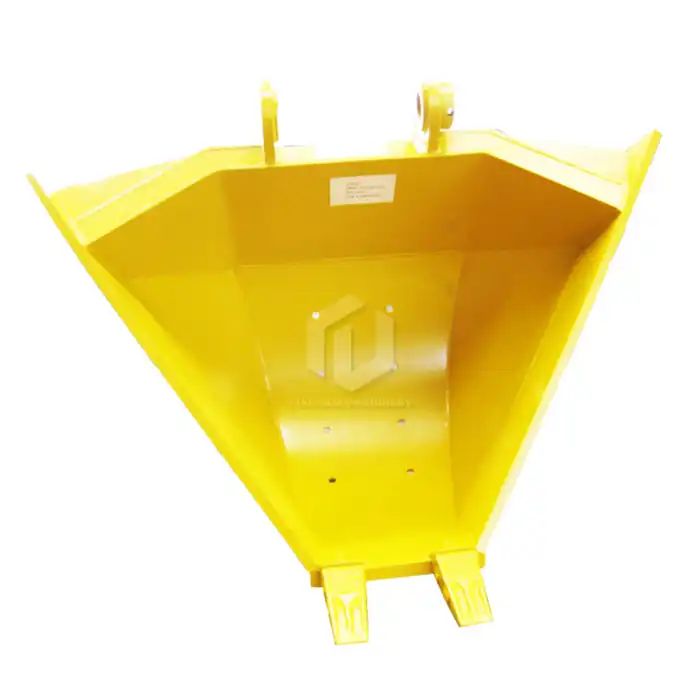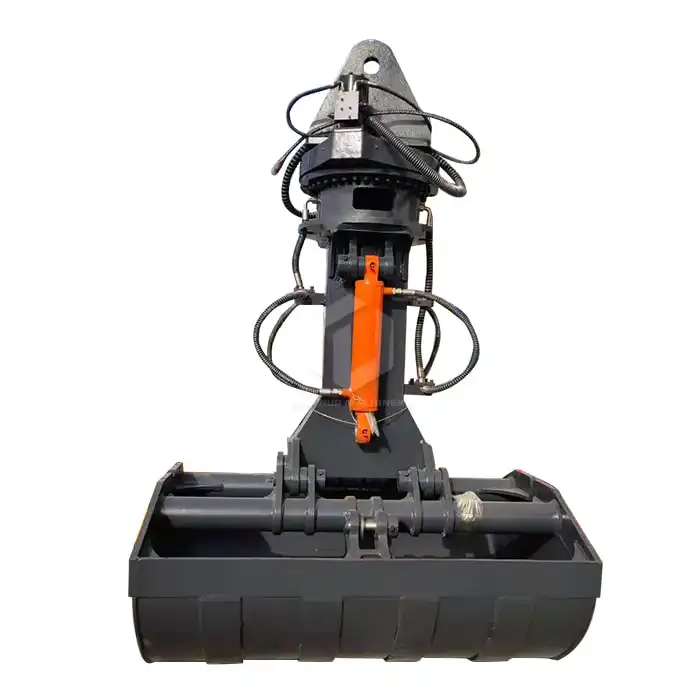Different types of buckets for excavators
Excavators are versatile machines essential for various construction, mining, and demolition projects. Their functionality largely depends on the type of bucket attached to them. Choosing the right bucket can significantly impact productivity, efficiency, and operational costs. Among the various options available, the excavator rock bucket stands out for its durability and specialized design for handling challenging materials. These heavy-duty attachments feature reinforced cutting edges and protective wear plates that enable them to withstand the abrasion and impact associated with rock excavation.
Standard Digging Bucket

The standard digging bucket, often referred to as a general-purpose bucket, is the most commonly used excavator attachment across construction sites worldwide. Its versatile design makes it suitable for various digging operations involving moderately soft to medium-hard materials.
Design Features and Construction
Standard digging buckets typically feature a streamlined profile with a smooth, curved interior that facilitates material flow during digging and dumping operations. The bucket's front edge incorporates replaceable teeth or a straight cutting edge, depending on the application requirements. The teeth penetrate the ground effectively, while the cutting edge provides a clean finish when necessary. These buckets are manufactured using high-strength steel plates that balance weight and durability, with strategic reinforcements at high-stress points. The attachment points are engineered to accommodate the hydraulic mechanisms of the excavator, ensuring responsive control during operation.
Applications and Suitable Materials
Standard digging buckets excel in everyday excavation tasks involving regular soil, clay, gravel, and sand. They perform admirably in trench digging, foundation preparation, and general earthmoving projects. The versatility of these buckets makes them indispensable for utility installations, landscaping, and routine construction activities. Their moderate capacity and balanced design allow operators to maintain control while handling various material densities. However, they may not be optimal for extremely compact or rocky terrain, where specialized buckets would be more appropriate.
Capacity Range and Sizing Considerations
Selecting the appropriate bucket size involves considering the excavator's operating capacity and the specific project requirements. Standard buckets typically range from 0.2 cubic meters for mini excavators to over 2 cubic meters for heavy machinery. The bucket width should align with the trench specifications or excavation parameters to ensure efficient material removal without unnecessary resistance. Additionally, matching the bucket weight to the excavator's lifting capacity prevents strain on the hydraulic system and maintains operational stability. Oversized buckets can compromise excavator performance and cause premature wear on critical components, while undersized options reduce productivity by necessitating more passes to complete tasks.
Heavy-Duty Bucket
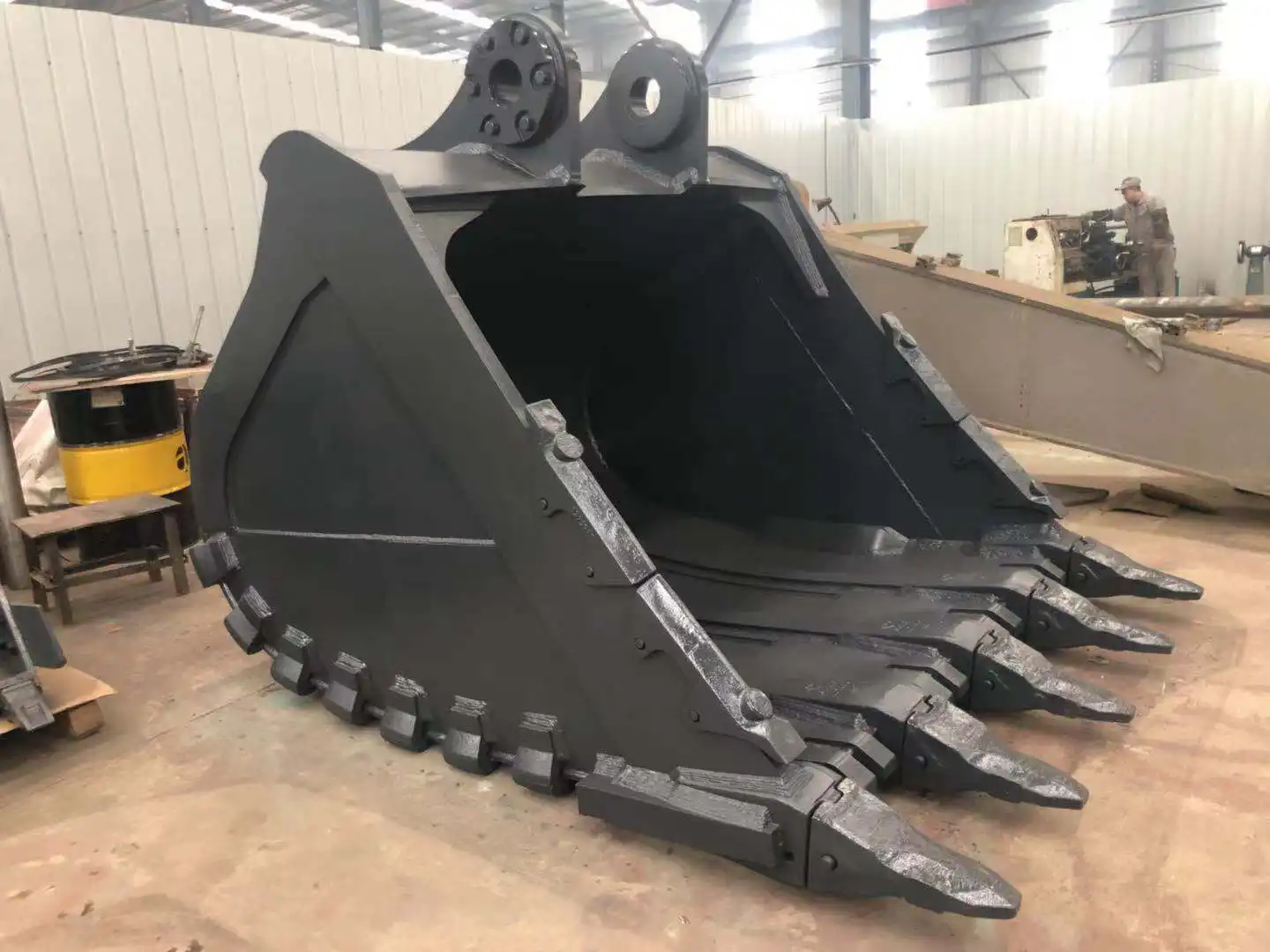
When standard buckets reach their operational limits, heavy-duty buckets provide the enhanced durability and strength needed for challenging environments and materials. These reinforced attachments represent a significant upgrade in excavator capabilities.
Enhanced Structural Features
Heavy-duty buckets incorporate additional reinforcement elements that distinguish them from standard models. The side plates feature increased thickness, often 30-40% greater than standard buckets, providing superior resistance to deformation under load. Strategic gussets and wear strips protect high-impact areas, extending the bucket's operational lifespan in demanding applications. The cutting edge typically features premium-grade hardened steel, sometimes with specialized heat treatments to enhance wear resistance. Heel plates protect the bottom section, while reinforced corners prevent distortion during lateral forces. These structural enhancements collectively create an attachment capable of withstanding significant stress without compromising performance.
Optimal Working Conditions
Heavy-duty buckets excel in environments where standard attachments would deteriorate rapidly. They perform exceptionally well in mixed soil conditions containing scattered rocks, compacted materials, and abrasive elements. Construction sites requiring demolition debris handling, land clearing involving root systems and embedded obstacles, and utility installations through variable underground conditions represent ideal applications. These buckets maintain their structural integrity when exposed to moderate impact loading and continuous abrasive wear, making them suitable for extended operation in challenging terrain. The increased weight of heavy-duty buckets also provides additional downward force, enhancing penetration capabilities in resistant materials.
Maintenance Requirements
The robust construction of heavy-duty buckets demands specific maintenance protocols to ensure optimal performance and longevity. Regular inspection of wear points, particularly teeth or cutting edge components, helps identify replacement needs before performance degradation occurs. Weld integrity checks should focus on stress concentration areas such as reinforcement gussets and corner joints. Proper teeth alignment maintenance ensures efficient penetration and reduces energy consumption during operation. Lubrication of pins and bushings prevents premature wear at connection points, while prompt replacement of worn protective elements preserves the bucket's structural integrity. Though heavy-duty buckets require more maintenance attention than standard models, their extended service life in challenging conditions justifies the additional care.
Rock Bucket

The excavator rock bucket represents specialized engineering designed specifically for the most demanding excavation challenges involving solid rock formations and highly abrasive materials. Its distinctive design prioritizes extreme durability over capacity.
Specialized Design Elements
Excavator rock buckets feature several distinctive design elements that set them apart from other attachments. The bucket profile typically adopts a narrower, more penetrating shape to effectively wedge into rock formations and create fracture points. Heavy-duty teeth configurations utilize specially formulated alloys that maintain sharpness despite continuous impact against hard surfaces. The tooth spacing accommodates rock fragment sizes common to the application, preventing material jamming between adjacent teeth. Side cutters incorporate tungsten carbide overlays or inserts that resist extreme abrasion while maintaining dimensional stability. The entire structure undergoes precision balancing to distribute stress evenly during high-impact operations, preventing catastrophic failure points. These design elements collectively create an attachment capable of maintaining productivity in environments that would rapidly destroy conventional buckets.
Performance in Quarrying and Mining
In quarrying and mining operations, excavator rock buckets demonstrate their exceptional value through consistent performance under extreme conditions. Their specialized tooth geometry creates efficient fracture patterns in rock faces, reducing the energy required for material removal while increasing productivity. The reinforced structure withstands the continuous shock loading characteristic of extracting consolidated materials, maintaining dimensional stability despite repeated impacts. These buckets effectively handle various rock densities from limestone to granite, adapting to changing geological conditions within the same extraction zone. Their design minimizes material retention issues common with irregular fragments, maintaining efficient cycle times throughout operations. When properly matched to the carrier machine, rock buckets provide the optimal balance between penetration force and material handling capacity, maximizing extraction volumes while minimizing equipment stress.
Material Compatibility Analysis
Excavator rock buckets demonstrate varying performance characteristics depending on specific material properties they encounter. With sedimentary rocks like sandstone and limestone, these buckets achieve optimal penetration and fragmentation due to the natural bedding planes that facilitate breakage. When confronting igneous materials such as granite or basalt, the bucket's reinforced teeth and structural components withstand the extreme hardness and abrasion while effectively creating fracture networks. Metamorphic rocks present variable challenges depending on their foliation patterns, with rock buckets excelling when the approach angle aligns with structural weaknesses. The buckets also handle highly abrasive materials like quartzite effectively, though at accelerated wear rates that necessitate more frequent maintenance interventions. Understanding the specific geological characteristics of the material being excavated allows operators to optimize bucket positioning and excavation techniques, maximizing productivity while minimizing wear.
FAQ
1. What factors should I consider when selecting an excavator bucket?
When selecting an excavator bucket, consider several critical factors to ensure optimal performance and cost-effectiveness. First, evaluate the material density and composition you'll be handling, as this determines the required bucket strength and tooth configuration. Next, assess your project's production requirements, including cycle times and volume targets, which influence capacity selection. The excavator's specifications—particularly lifting capacity and hydraulic power—establish upper limits for bucket size and weight. Consider the working environment, including space constraints and ground conditions, which might necessitate specialized designs. Finally, analyze the total ownership cost, balancing initial investment against projected lifespan and maintenance requirements based on application severity.
2 . Can excavator buckets be customized for specific applications?
Excavator buckets offer extensive customization options to address specialized application requirements. Custom tooth patterns and spacing can optimize penetration and material flow for specific geological conditions. Side cutters and wear plates can be modified with various protective materials tailored to the predominant wear mechanism. Bucket width, depth, and profile can be engineered to match precise production requirements and material characteristics.
3. What makes rock buckets different from other heavy-duty excavator buckets?
Excavator rock buckets differ fundamentally from other heavy-duty options through specialized design characteristics optimized specifically for rock extraction. Their tooth systems typically feature more aggressive penetration angles and premium alloy compositions capable of withstanding extreme impact forces without deformation. The structural reinforcement pattern focuses on distributing shock loads throughout the entire bucket assembly, unlike conventional heavy-duty designs that primarily address abrasion resistance.
Excavator Rock Bucket For Sale
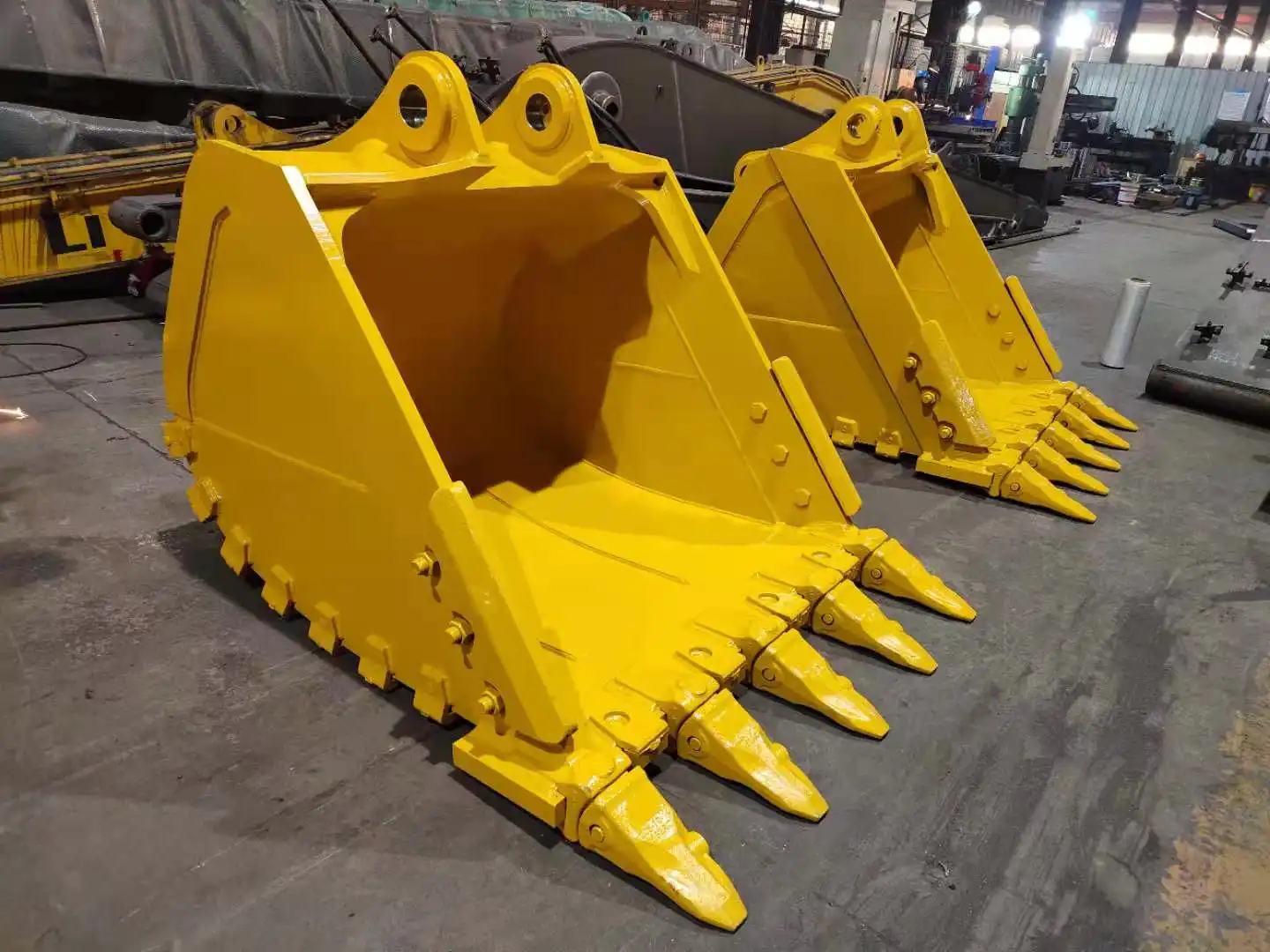
Enhance your excavation capabilities with Tiannuo Machinery's excavator rock bucket. Our buckets are engineered to provide capacities ranging from 0.2 to 5.0 cubic meters, with weights between 150 and 2500 kg and widths from 600 to 2200 mm. Available in pin-on or quick coupler attachments, they are compatible with various excavator models. Safety features such as reinforced edges and wear plates ensure long-lasting performance. Customization options are available to suit your specific requirements. Ready to boost your efficiency? Contact us at arm@stnd-machinery.com, rich@stnd-machinery.com, or tn@stnd-machinery.com to learn more and place your order.
References
Johnson, M. (2023). Modern Excavation Equipment: Applications and Advancements. Construction Technology Journal, 45(2), 112-128.
Zhang, H., & Williams, P. (2024). Wear Resistance in Heavy Construction Equipment: Materials and Design. Engineering Materials Review, 18(3), 87-103.
Peterson, A. (2023). Optimizing Excavator Performance Through Attachment Selection. Journal of Construction Equipment, 29(4), 203-219.
Nguyen, T., & Thompson, R. (2024). Rock Fragmentation Mechanics in Mining Operations. International Journal of Mining Engineering, 36(2), 156-172.
Garcia, L. (2023). Material Handling Equipment in Construction: Efficiency and Durability Considerations. Construction Management Review, 14(1), 67-82.
About Author: Arm
Arm is a leading expert in the field of specialized construction and railway maintenance equipment, working at Tiannuo Company.


